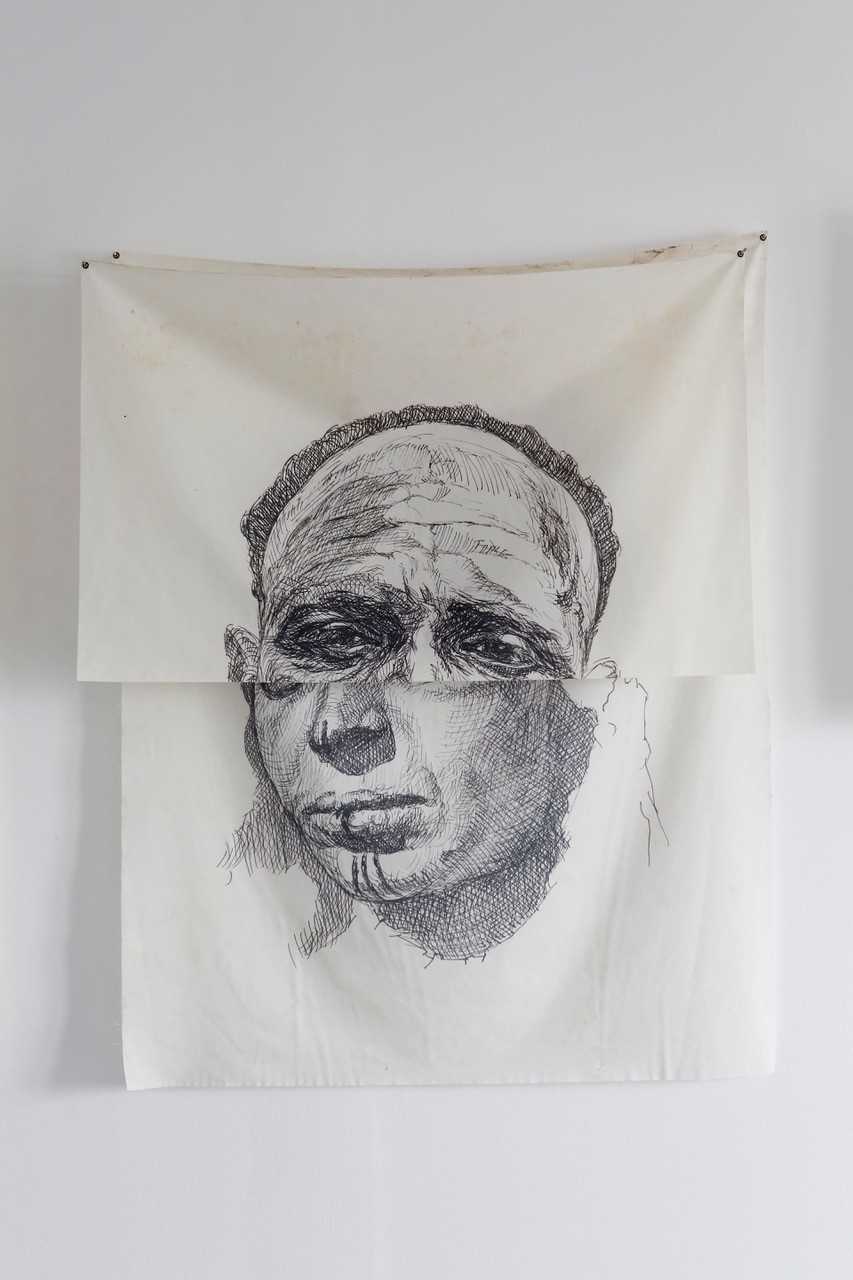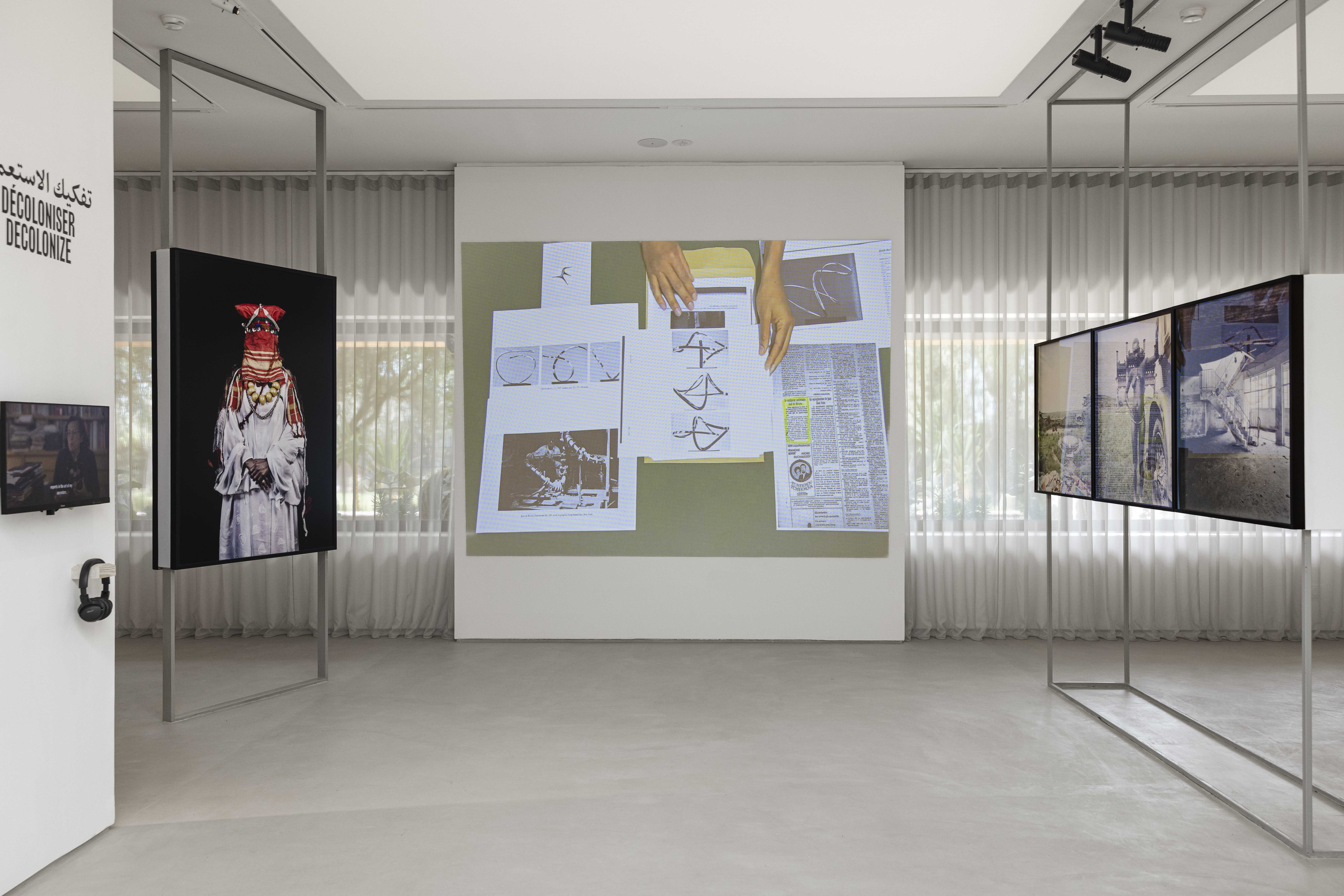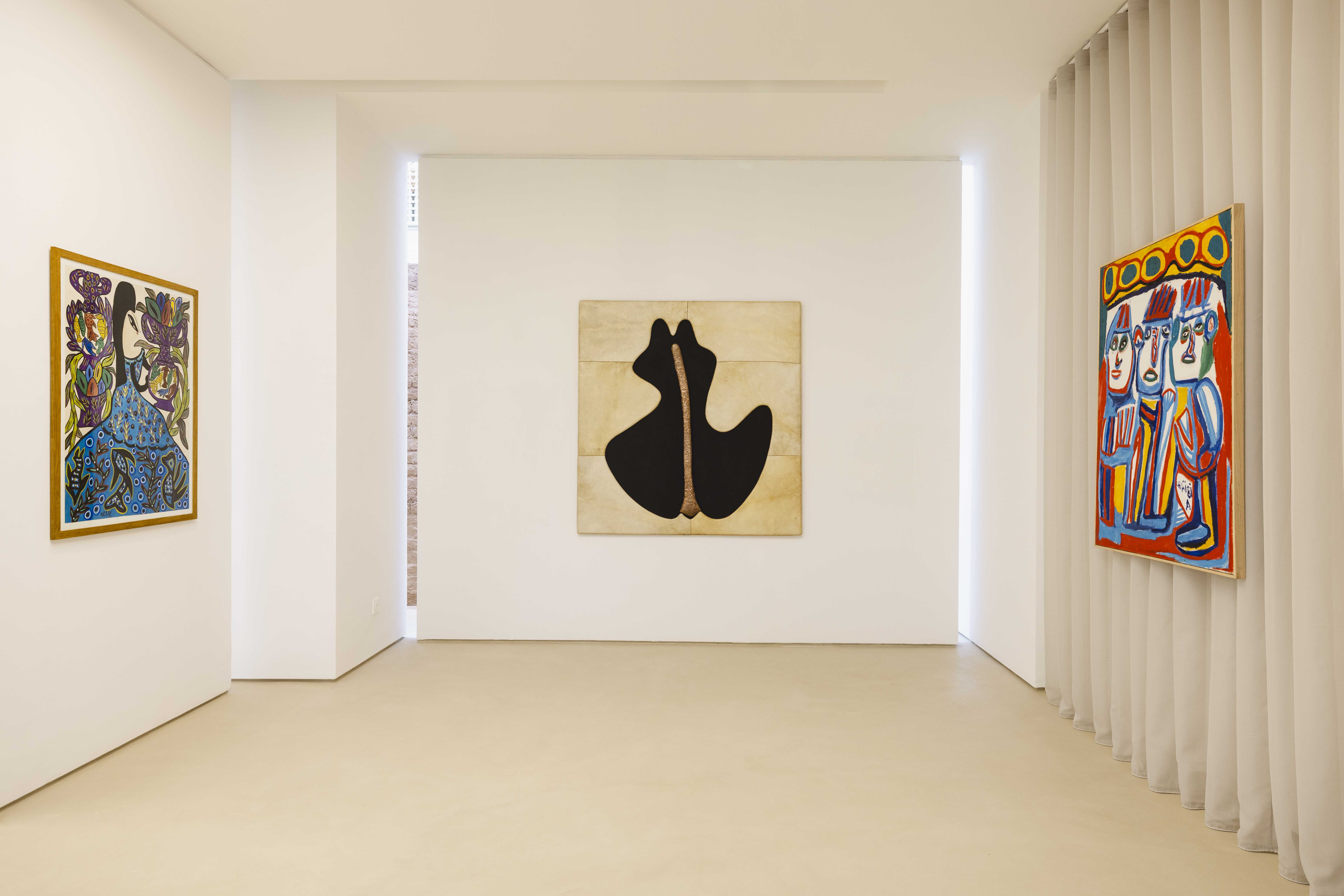من خلال النهب الواسع للخيرات، جرّدت الحملة الاستعمارية في القرنين التاسع عشر والعشرين إفريقيا من العديد من ثرواتها، بينما أنتجت صورًا نمطية وخيالية عن سكانها. يتناول الفنانون العارضون في هذه القاعة شروط قلب هذه الصور. إنهم\إنهن يواجهون أشباح التاريخ الاستعماري ويطالبون باستعادة السرديات المهمشة أو المدمرة. ومع العلم أن تفكيك استعمار المتاحف لا يمكن أن يتم دون تفكيك استعمار العالم، تساهم هذه الأعمال في الجهد العام لتجديد المخيلات.
Through a massive plunder of objects, the colonial enterprise of the 19th and 20th centuries stripped Africa of many of its riches, while producing stereotyped and fantasised images of its inhabitants. The artists presented in this room question the conditions for overturning these images. They confront the revenants of colonial history to reclaim marginalised or destroyed narratives. Understanding that the decolonisation of museums cannot occur without the decolonisation of the world, these works contribute to the global effort of renewing imaginations.
مقابلة مع المنظرة وكاتبة المقالات أرييلا عائشة أزولاي
Interview with theorist and essayist Ariella Aïcha Azoulay
أرييلا عائشة أزولاي، هي منظّرة سياسية تستخدم الأدوات البصرية لدراسةٍ مناهضةٍ للاستعمار تتناول العنف الكامن في التقنيات والمؤسسات مثل المتاحف، الأرشيف، والدولة القومية. في عملها "مقاومة المجوهرات" (2023)، تساعدنا على إعادة تخيّل العالم الذي سبق الانقسامات الاستعمارية المفروضة ضد التشابك التاريخي العميق بين العوالم الإفريقية، اليهودية، العربية، والأمازيغية – انقسامات شملت أيضًا البشر ومهاراتهم.
Ariella Aïcha Azoulay is a political theorist who uses visual tools for an anticolonial study of the violence inherent in technologies and institutions such as museums, archives, and the nation-state. Her work La résistance des bijoux (2023) helps us to imagine once again the world that preceded colonial divisions imposed upon the centuries-old entanglement of African, Jewish, Arab, and Amazigh worlds–divisions that also separate people and their craftsmanship.

نضال الشامخ (تونس، مواليد 1985)
Nidhal Chamekh (Tunisia, born in 1985)
الفنان التونسي نضال الشامخ معروف بتحويله فن الرسم إلى أكثر من مجرد تعبير جمالي، حيث جعله أداة للاستقصاء السياسي والتاريخي من خلال الأرشيفات. وقد استخدم هذا الفن تحديدًا في نقد صور ومعارف الاستعمار أو "تحريرها من التصور الاستعماري. في سلسلة "وجوهنا"، استلهم الفنان من مقالات الدعاية الاستعمارية الفرنسية (مجلة "لو ميروار" Le Miroir -المرآة- التي أُنشئت عام 1910)، حيث كان يتم تصنيف "الرماة السنغاليين والبربر" خلال الحرب العالمية الأولى ضمن أنماط إثنو-عرقية محددة. من المعروف أن تقنية البورتريه الفوتوغرافي أو الرسم التخطيطي للمستعمَر، والأجنبي، والعبد، لعبت دورًا مركزيًا في الخيال الاستعماري. وفي غياب القدرة على تحديد أسماء جميع الوجوه التي أعاد رسمها (باستخدام تقنية نقل الحبر على النسيج)، يعمّق الفنان إنكار وجودهم عن طريق تركيب أنصاف وجوه متناقضة. بدلًا من طمس الهويات، يتخذ العمل مخاطرة تمزيقها وتفتيتها، في محاولة للوصول إلى جراح صامتة لقصص تاريخية يرويها المنتصرون الرسميون. وجوه ساهمت في تحرير فرنسا لكنها ظلت على الدوام على هامش سردها الوطني وحربها التي توصف بـ"العالمية"، بينما كانت بالأساس حروبًا تخص الإمبراطوريات الاستعمارية الأوروبية. المجاورة التي يقدمها العمل هنا بين هذا العمل الشبح والرسومات الاستشراقية لجنود أفارقة من توقيع الفنان لويس جون إندريس Louis John Endres ، تفتح فجوة في نظام تمثيلي تجاوزه الزمن لكنه لا يزال حيًا.
Tunisian artist Nidhal Chamekh is known for taking the medium of drawing and turning it from a simple line to become a tool for political and historical investigation through archives; used particularly in a critical endeavour or decolonisation of images and knowledge. For the series Nos visages, he found sources in French colonial propaganda (Le Miroir review, created in 1910), in which World War I Senegalese and Berber tirailleurs (African soldiers who fought for the French) were reduced to ethno-racial tropes. We are all too familiar with the photographic portrait or sketch of the colonised, the foreigner, and the slave in the colonial imagination. Rather than putting a name to the many faces he has redesigned (using an ink transfer technique on textile), the artist radicalises the erasure of their existence by superimposing two sides of faces that contradict each other. The concept transcends blurring identities to assume the risk of tearing through skin to get closer to the silent wounds of a history rendered by the ‘official’ victors. Faces that contributed to the liberation of France–but remain forever on the margins of its national narrative–and of a war that is defined as ‘global’, though it primarily involved European colonial empires. The proximity of this ghostly work to Louis John Endres's Orientalist drawing of African soldiers opens a breach in a system of representation that is outmoded, yet survives in remanence.
الفنانون المعروضون
Exhibited Artists
ليلى العلوي, سامي بالوجي, باية محي الدين, فريد بلكاهية, هشام بنهود, هشام بنهود, هشام بنهود, سيني أوا كامارا, طلال شعيبية, نضال شميخ, لويس إندريس, أيانا في. جاكسون, جاك ماجوريل, مالانغاتانا نغوينيا
Leila Alaoui, Sammy Baloji, Baya Mahieddine, Farid Belkahia, Hicham Benohoud, Seyni Awa Camara, Chaibia Talal, Nidhal Chamekh, Louis Endres, Ayana V. Jackson, Kapwani Kiwanga, Jacques Majorelle, Malangatana Ngwenya


